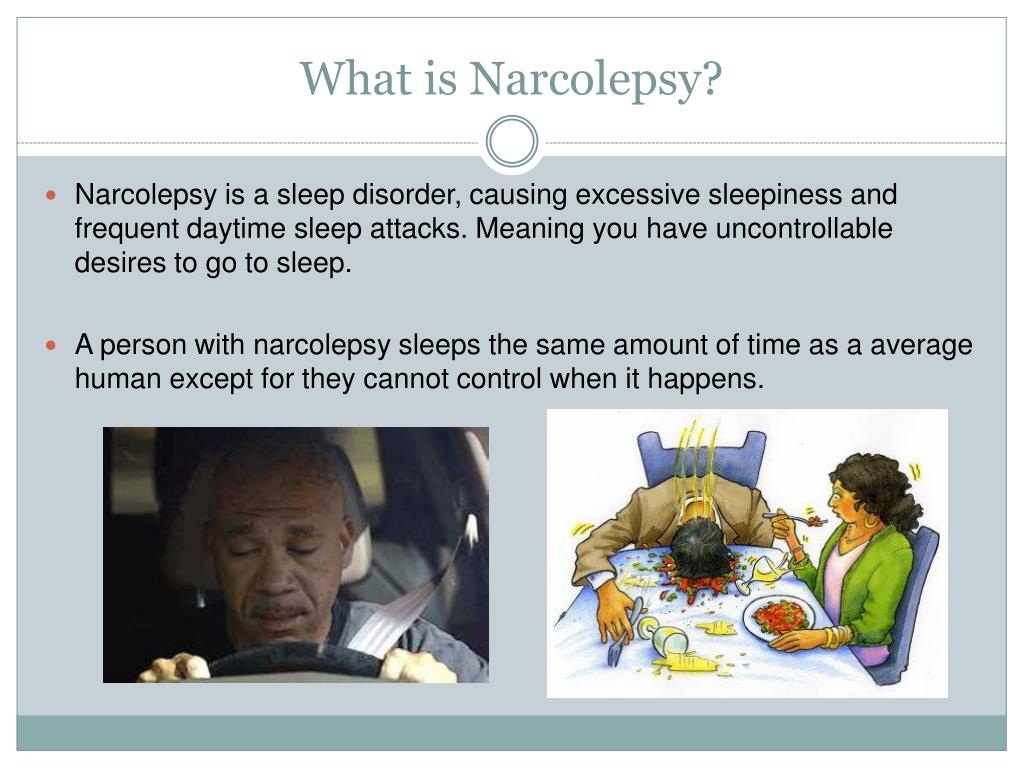

Narcolepsy isn’t a deadly disease by itself, but episodes can lead to accidents, injuries, or life-threatening situations.Īdditionally, people with narcolepsy may have difficulty maintaining jobs, doing well in school, and have problems maintaining relationships due to episodes of excessive daytime sleepiness. When cataplexy is absent, it’s called narcolepsy type 2. This can be mistaken for seizure activity, especially in children. In many cases, it also causes unexpected and temporary loss of muscle control, known as cataplexy. Narcolepsy causes significant daytime drowsiness and “ sleep attacks,” or overwhelming urges to fall asleep, and poor fragmented sleep at night. It typically starts in the mid-teenage years. The symptoms of narcolepsy usually begin between the ages of 7 and 25, although the condition is often not recognized right away and often misdiagnosed. Experts estimate it affects about 1 in 2,000 people. It causes abnormal sleep that can affect a person’s quality of life. The evolution of the disease is often stable with a frequent improvement of sleepiness and cataplexy, but with age there is an aggravation of the poor quality of night sleep.Narcolepsy is a chronic neurological condition that affects the nervous system.
#Symptoms of cataplexy professional#
Narcolepsy can severely disable scholarly and professional performances.

A good sleep hygiene is always recommended, with scheduled short naps, and regular sleep habits. Sodium oxybate is efficient for sleepiness, cataplexy and disturbed nocturnal sleep. Second-line treatments are methylphenidate, solriamfetol or amphetamines. First-line treatment of diurnal sleepiness is often with modafinil but it can be also with pitolisant or sodium oxybate. It comprises stimulants (modafinil, methylphenidate, amphetamine, pitolisant, solriamfetol), anticataplectic drugs (antidepressants) or sodium oxybate. Treatment is nowadays only symptomatic, as the loss of orexin neurons is irreversible. Rare familial cases have been reported (<2%) however the mode of inheritance is unclear. In absence of typical cataplexy, other causes of sleepiness must be considered, such as chronic insufficient sleep, idiopathic hypersomnia or narcolepsy without cataplexy, now called narcolepsy type 2. Differential diagnosisĬataplexy must be typical to be confident with the diagnosis. The presence of low hypocretin-1 levels (<110 pg/ml) in the cerebrospinal fluid can confirm the diagnosis with an excellent sensibility and specificity. Nocturnal and daytime polysomnography demonstrate an average sleep latency of under eight minutes with at least two sleep onset rapid eye movement periods (SOREMP) on multiple sleep latency tests. Diagnostic methodsĭefinitive diagnosis requires the presence of clinical symptoms, characteristic polysomnography findings and/or low hypocretin-1 levels in cerebral spinal fluid. An autoimmune origin for the disease is highly suspected, particularly environmental factors interacting with susceptibility genes (more than 98% of the patients carry the HLA-DQB1*0602 allele) however, this is unproven. The disease is due to loss or impairment of the orexin/hypocretin neurons of the lateral hypothalamus that results in decreased hypocretin-1 levels in the cerebrospinal fluid. Other, non specific, clinical signs include hypnagogic hallucinations, sleep paralysis, disturbed nocturnal sleep, and weight gain, especially in children. The average time between the age of appearance of the symptoms and the diagnosis is still very long, 10 years. The age of onset varies between 10 and 30 years old and symptoms are lifelong. Narcolepsy type 1 prevalence is estimated between 1/2,000 and 1/5,000.


 0 kommentar(er)
0 kommentar(er)
